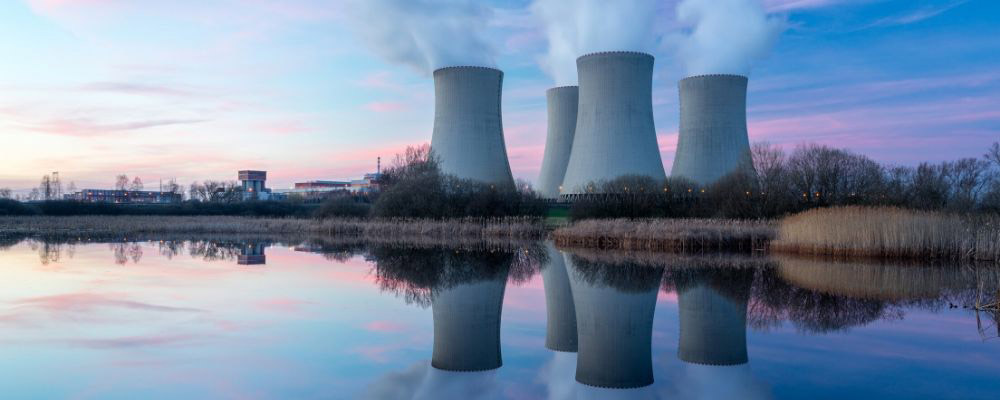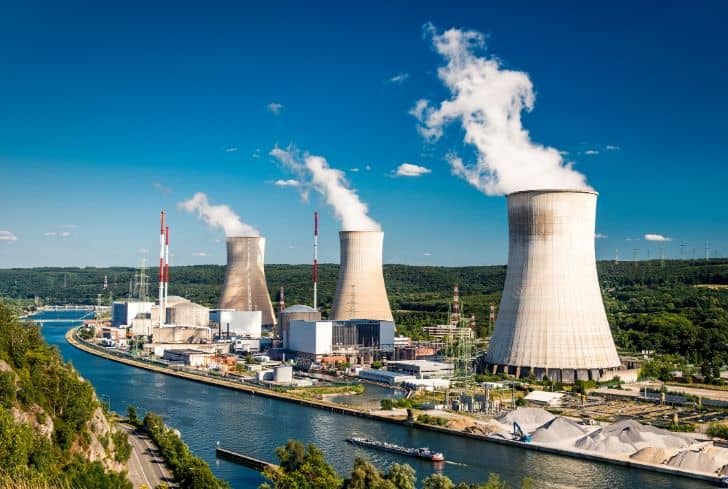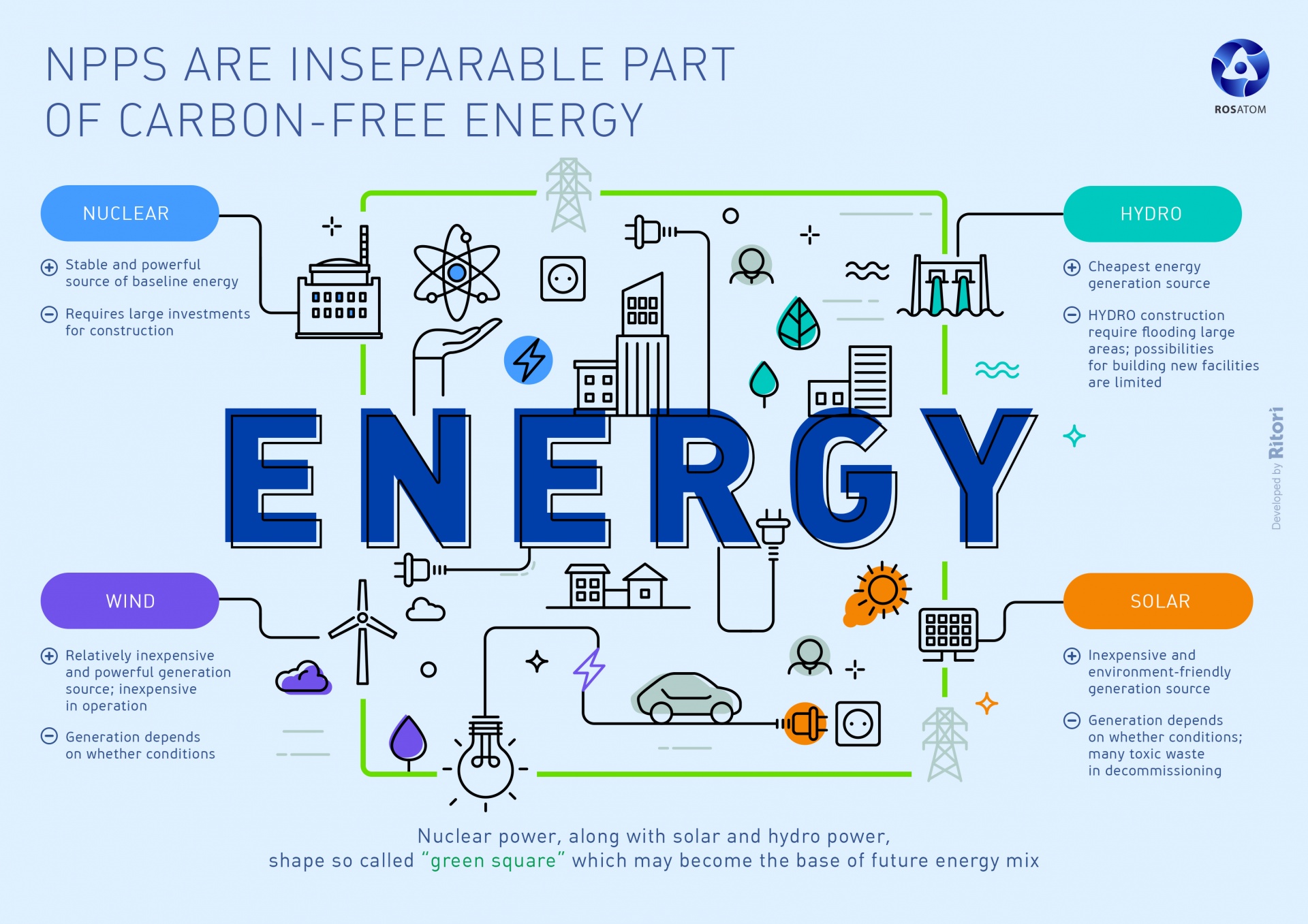Which Are Advantages of Using Nuclear Reactors to Generate Electricity
Nuclear power plants produce a large amount of energy for a small mass of fuel. Which are benefits of using nuclear power plants to generate electricity.

21 Advantages And Disadvantages Of Nuclear Energy Futureofworking Com
Celina Treviho M Omar AlatorreM ADVANTAGES.

. Nuclear power is readily available. More than 30 nations use this form of energy at some level to create the power that is needed for the modern lifestyle to be lived. Which are advantages of using nuclear reactors to generate electricity.
Nuclear energy protects air quality by producing massive amounts of carbon-free electricity. Our electricity is zero carbon 1 so you could be helping the. Nuclear energy only has about 15 of its total expenses in the front-end costs of a new facility.
Which are benefits of using nuclear power plants to generate electricity. In addition to the expense of building a power plant nuclear plants must also allocate funds to protect the waste they produce and keep it in cooled structures with security procedures in place. Nuclear power produces relatively low carbon dioxide emissions.
Nuclear power uses nonharmful fuel. Check all that apply. It also has one of the smallest carbon footprints.
Which are advantages of using nuclear reactors to generate electricity. This reduces transport costs - althoug. The advantages to using nuclear power.
Nuclear fission is responsible for more than 10 of the electricity that the planet currently consumed. Nuclear power is readily available. Nuclear power plants use renewable fuel.
Check all that apply. Its essential to our response to climate change and greenhouse gas emissions. More about it further on cNuclear energy.
Nuclear power plants produce no toxic waste products. Nuclear power plants use renewable fuel. Nuclear power plants produce no toxic waste products.
Advantages of nuclear power. Most of the time the discussions about its importance include statements that are promoting its advantages of benefits to humans. When you compare that to natural gas 87 or coal 78 then the expenses are manageable over time for most developed countries.
Its one of the answers to the energy gap. Nuclear power plants produce a large amount of energy for a small mass of fuel. Nuclear power plants use renewable fuel.
Less use of fossil fuelsmeans lowering. Nuclear power has a high output. It powers communities in 28 US.
All of these costs make nuclear power quite expensive. The generation of electricity through nuclear energy reduces the amount of energy generated from fossil fuels coal and oil. Nuclear power has a high output.
Several countries are already using these power plants to generate electricity for huge industries houses and business establishments with the use of nuclear energy. Nuclear power produces no hazardous byproducts. Nuclear power plants produce a large amount of energy for a small mass of fuel.
Check all that apply. Nuclear power produces relatively low carbon dioxide emissions. Nuclear power plants use renewable fuel.
Nuclear power plants have very strict safety measures in place. Nuclear power plants produce little to no greenhouse gas. Nuclear power plants also use extensive concrete and metal to keep people safe which adds another energy element into the equation.
Nuclear power produces relatively low carbon dioxide emissions. Nuclear energy tackles 3 of the greatest problems humanity has encountered in its struggle to get energy. Check all that apply.
Nuclear power has a high output. States and contributes to many non-electric applications ranging from. One of the most low-carbon energy sources.
It takes millions of tons of coal or oil for example to duplicate the energy production of just one ton of uranium according to some estimates. Advantages and Challenges of Nuclear Energy. Nuclear power is readily available.
Nuclear power produces no hazardous byproducts. The advantages of nuclear power are. Today there are currently 60 operating nuclear power plants with 98 reactors in the US spread over 30 states.
Advantages Disadvantages of Nuclear Energy By. On December 20 1951 the United States developed the use of nuclear power for electric applications for the first time in Arco Idaho. Nuclear power produces no hazardous byproducts.
Check all that apply. It can provide cheap energy resources for the planet. Nuclear power uses nonharmful fuel.
Nuclear energy is a proven and reliable resource. Advantages of Nuclear Power Nuclear energy generates electricity very efficiently when compared to coal-generated power plants. The Advantages of Nuclear Fission.
Nuclear power plants produce little to no greenhouse gas. Although other forms of energy are. Below are the benefits of using nuclear power plants to generate electricity.
Nuclear power plants produce little to no greenhouse gas. The nuclear fission process can provide an extended-release of energy. ANuclear power plants dont require a lot of space.
Nuclear power uses nonharmful fuel. When you compare all of these costs to what coal natural gas or oil require it still comes out ahead as a clean fuel source to use. Nuclear power plants produce no toxic waste products.
Nuclear power plants use simple power plant designs not vulnerable to human error or natural disasters. One plant can producea large amount of energy without a constant supply of fuel Withno need for fuel plants are independent of fuel. Blt doesnt pollute it does but in a very different way.
The advantages of nuclear power are first that uranium fuel can substitute for fossil fuel and the more different types of fuel we can use the less dependent we are on any single type and. Is the leading national producer producing over 30 of the worlds nuclear power. Which are advantages of using nuclear reactors to generate electricity.

Various Pros And Cons Of Nuclear Energy Conserve Energy Future

Rosatom State Atomis Energy Corporation Rosatom Global Leader In Nuclear Technologies Nuclear Energy

Comments
Post a Comment